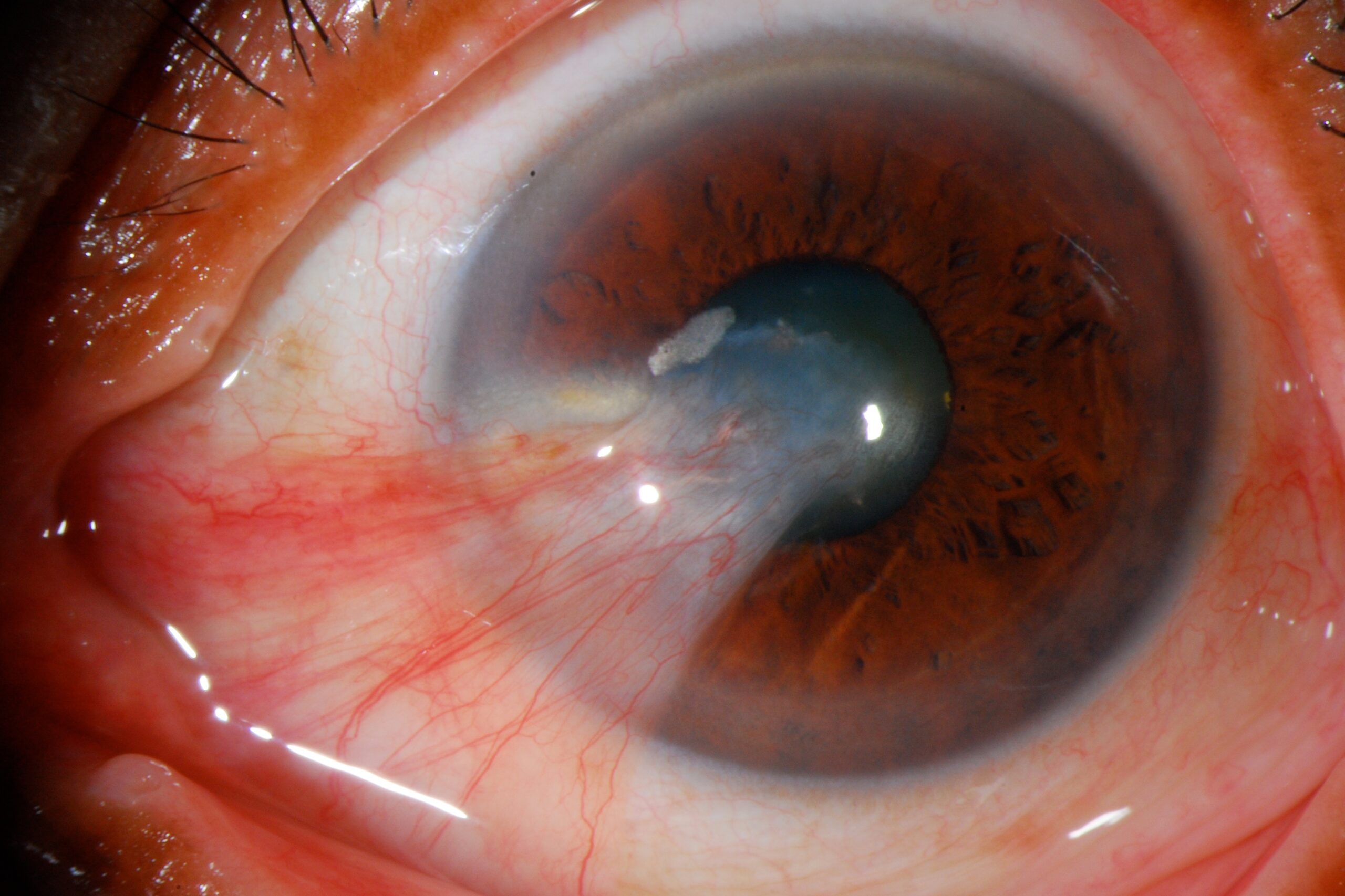What are the symptoms of pterygium?
Pterygium is a benign growth of tissue on the conjunctiva, the thin membrane covering the white part of the eye. It often extends onto the cornea. The symptoms of pterygium can vary, but they commonly include:
- Redness and Irritation: The eye may appear red and feel irritated or itchy.
- Dryness: There may be a sensation of dryness in the eye.
- Foreign Body Sensation: Some people feel as though there is something in their eye.
- Swelling: The affected area of the eye may become swollen.
- Blurred Vision: If the pterygium grows over the cornea, it can cause blurred vision or affect vision clarity.
- Cosmetic Concerns: The growth can be noticeable and cause cosmetic concerns, as it may appear as a pink or flesh-colored tissue on the eye.
In some cases, pterygium may be asymptomatic and only discovered during an eye examination.
What are the causes of pterygium?
Pterygium is primarily associated with environmental and lifestyle factors. The main causes and risk factors include:
- UV Light Exposure: Prolonged exposure to ultraviolet (UV) light from the sun is a significant risk factor. People who spend a lot of time outdoors without proper eye protection are more susceptible.
- Wind and Dust: Chronic exposure to wind and dust can irritate the eyes and contribute to the development of pterygium.
- Geographic Location: Individuals living in sunny, arid regions where UV exposure is higher are at greater risk.
- Genetics: There may be a genetic predisposition, as pterygium can run in families.
- Age: Pterygium is more common in adults over the age of 40, although it can occur in younger individuals as well.
The combination of these factors can lead to the growth of pterygium as a response to chronic irritation and UV exposure.
What is the treatment for pterygium?
The treatment for pterygium aims to relieve symptoms, prevent progression, and address cosmetic concerns. The approach depends on the severity of the condition. Treatment options include:
- Artificial Tears: Over-the-counter lubricating eye drops can help alleviate dryness and irritation associated with pterygium.
- Topical Steroids: Prescription steroid eye drops may be used to reduce inflammation and redness, especially if the pterygium is causing significant symptoms.
- Surgical Removal: If the pterygium is large, growing, or causing vision problems, surgery may be necessary. The procedure involves removing the growth and sometimes applying a graft from the patient’s own conjunctiva (tissue covering the white part of the eye) to cover the area where the pterygium was removed.
- Prevention of Recurrence: After surgery, it’s crucial to use medications and follow-up care to minimize the risk of the pterygium coming back. In some cases, additional treatments like conjunctival autograft or anti-VEGF (vascular endothelial growth factor) injections may be considered to reduce the chance of recurrence.
- Sun Protection: To prevent the formation or recurrence of pterygium, wearing UV-blocking sunglasses and hats can protect the eyes from further sun exposure.

Leave a Reply
You must be logged in to post a comment.